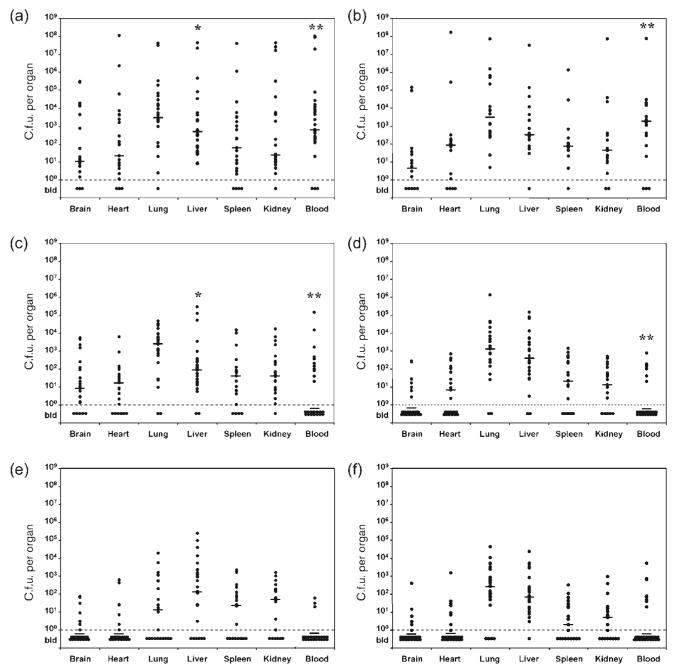Fig. 1.
Progression of systemic E. coli K1 infection in neonatal rat pups. (a, b) Viable bacteria were cultured from blood and homogenized tissues 2 days (a) and 3 days (b) after feeding of A192PP to P2 rats. (c–e) Groups of A192PP-fed P2 rats were also dosed via the i.p. route with 20 μg endoE 1 day after feeding of bacteria (at P3) and blood and tissue colony counting performed at P4 (c), P5 (d) and P6 (e). Other animals were given daily i.p. doses of 20 μg endoE and bacteria enumerated at P6 (f). Data points represent bacterial counts per organ for individual pups; three litters were infected on separate occasions and the data grouped as indicated. The range of bacterial counts obtained for each of the three datasets within experiments was comparable. The median for each dataset is indicated. Counts were not performed on organs from pups that died during the course of the infection (number of dead pups/total pups: a, 3/30; b, 12/30; c, 3/30; d, 7/30; e, 5/29; f, 7/34). The differences in blood counts between untreated and endoE-treated pups at P4 and P5 were highly significant (**, P<0.001; Mann–Whitney two-tailed U-test); organ counts were not significantly different at these time points with the exception of liver at P4 (*, P<0.05). bld, below limit of detection.

